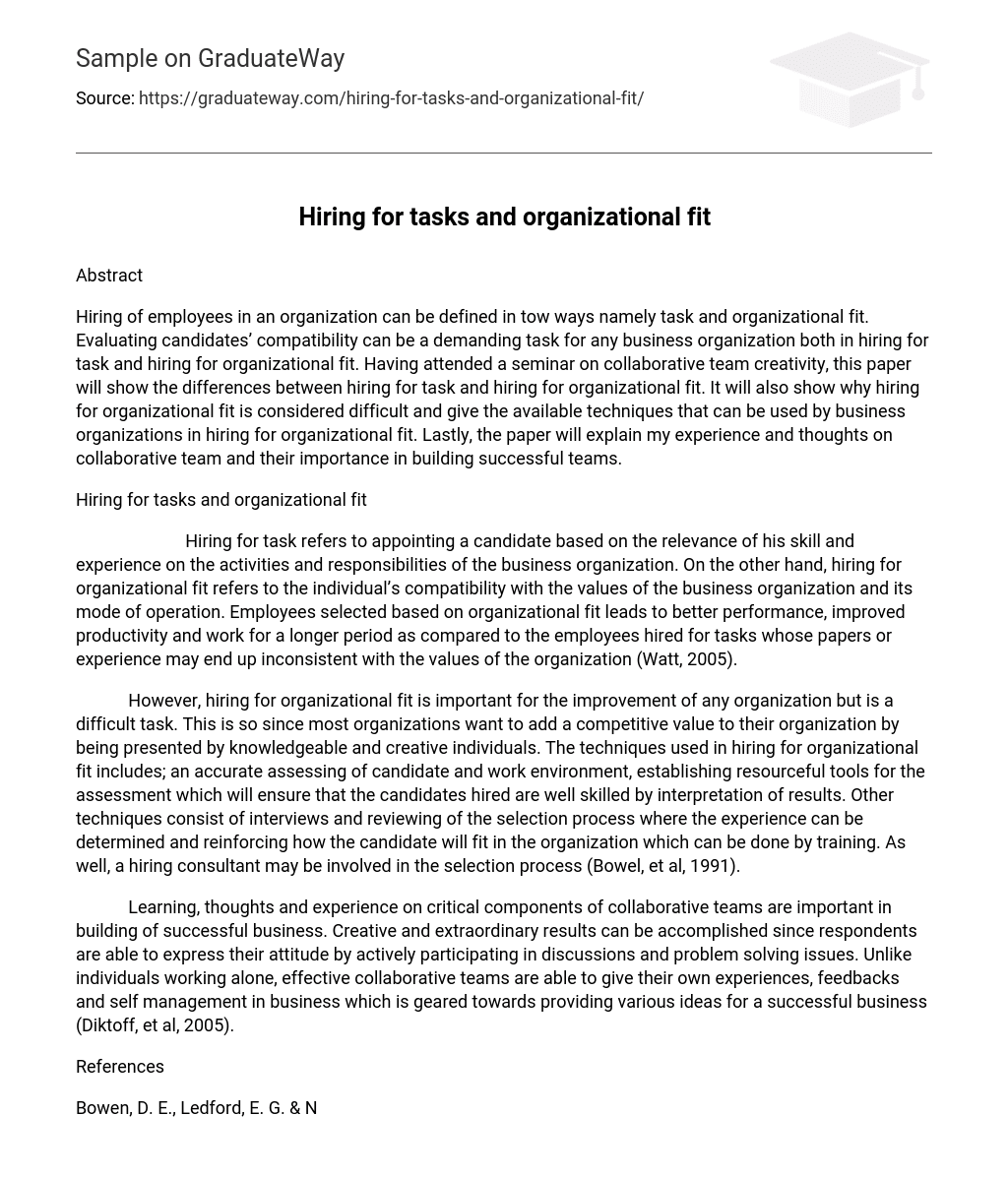Abstract
Hiring of employees in an organization can be defined in tow ways namely task and organizational fit. Evaluating candidates’ compatibility can be a demanding task for any business organization both in hiring for task and hiring for organizational fit. Having attended a seminar on collaborative team creativity, this paper will show the differences between hiring for task and hiring for organizational fit. It will also show why hiring for organizational fit is considered difficult and give the available techniques that can be used by business organizations in hiring for organizational fit. Lastly, the paper will explain my experience and thoughts on collaborative team and their importance in building successful teams.
Hiring for tasks and organizational fit
Hiring for task refers to appointing a candidate based on the relevance of his skill and experience on the activities and responsibilities of the business organization. On the other hand, hiring for organizational fit refers to the individual’s compatibility with the values of the business organization and its mode of operation. Employees selected based on organizational fit leads to better performance, improved productivity and work for a longer period as compared to the employees hired for tasks whose papers or experience may end up inconsistent with the values of the organization (Watt, 2005).
However, hiring for organizational fit is important for the improvement of any organization but is a difficult task. This is so since most organizations want to add a competitive value to their organization by being presented by knowledgeable and creative individuals. The techniques used in hiring for organizational fit includes; an accurate assessing of candidate and work environment, establishing resourceful tools for the assessment which will ensure that the candidates hired are well skilled by interpretation of results. Other techniques consist of interviews and reviewing of the selection process where the experience can be determined and reinforcing how the candidate will fit in the organization which can be done by training. As well, a hiring consultant may be involved in the selection process (Bowel, et al, 1991).
Learning, thoughts and experience on critical components of collaborative teams are important in building of successful business. Creative and extraordinary results can be accomplished since respondents are able to express their attitude by actively participating in discussions and problem solving issues. Unlike individuals working alone, effective collaborative teams are able to give their own experiences, feedbacks and self management in business which is geared towards providing various ideas for a successful business (Diktoff, et al, 2005).
References
Bowen, D. E., Ledford, E. G. & Nathan B. R. (1991). Hiring for the organization, not the job. Retrieved October 25, 2008 from http://faculty.babson.edu/krollag/org_site/org_theory/manuf_articles/bowen_hirin g.html
Diktoff, M., Moore, T., Allen, C. & Pollard D. (2005). The ideal collaborative team. Retrieved October 25, 2008 from http://www.ideachampions.com/downloads/collaborationresults.pdf.
Watt, B. (2005). How to hire for cultural fit. Retrieved October 25, 2008 from http://www.humanresourcesmagazine.com.au/articles/E6/0C02DBE6.asp





